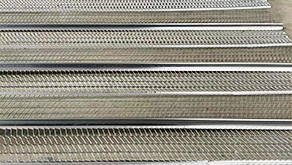Nov . 12, 2024 03:36 Back to list
air pressure control valve
Understanding Air Pressure Control Valves Essential Components in Fluid Systems
Air pressure control valves are crucial components in a variety of fluid control systems, playing a significant role in managing air pressure within pneumatic circuits, HVAC systems, and various industrial applications. These valves ensure that the pressure levels remain within specific limits, thereby enhancing system efficiency and preventing damage to equipment caused by overpressure conditions.
The Function of Air Pressure Control Valves
At their core, air pressure control valves serve to regulate the pressure of air or other gases in a controlled manner. They adjust the flow rate of compressed air to achieve desired pressure levels set by operators or system controls. These valves can be categorized into two primary types pressure relief valves and pressure reducing valves.
1. Pressure Relief Valves These valves protect systems from excessive pressure. They automatically open to release excess air or gas when the pressure exceeds a predetermined level, thus preventing potential damage to pipes, connectors, or downstream equipment.
2. Pressure Reducing Valves Conversely, pressure reducing valves are designed to decrease input pressure to a lower, stable output pressure. This function is vital in applications where precision in pressure is required, such as in pneumatic tools or laboratory settings where consistent pressure is necessary for accurate results.
How Air Pressure Control Valves Work
The operation of air pressure control valves largely depends on their design. Most valves utilize a spring and diaphragm mechanism to sense pressure changes. In a typical pressure relief valve, as the internal pressure rises and reaches a threshold, the diaphragm flexes, lifting the valve seat and allowing air to escape. This action reduces the internal pressure back to safe operating levels.
In pressure reducing valves, the process is slightly different. These valves employ a similar diaphragm mechanism to regulate the output pressure. When the pressure downstream falls below a set point, the diaphragm shifts to open the valve, allowing compressed air to enter until the appropriate pressure is achieved.
Applications of Air Pressure Control Valves
The versatility of air pressure control valves makes them applicable across numerous industries
air pressure control valve

- Manufacturing In manufacturing settings, these valves are essential for controlling the operation of pneumatic machinery, ensuring consistent air pressure for tools such as air drills and conveyors. - HVAC Systems In heating, ventilation, and air conditioning systems, pressure control valves maintain system balance, optimizing energy efficiency and ensuring proper air circulation throughout a building.
- Automotive Industry Air pressure control valves play a pivotal role in systems like pneumatic brakes and suspension systems, ensuring safety and responsive handling by maintaining optimal pressure levels.
- Food and Beverage In the food industry, where hygiene and precision are paramount, these valves are used in processes that require controlled air pressure to maintain product quality and safety
.Selecting the Right Air Pressure Control Valve
When choosing an air pressure control valve, several factors must be considered
- Flow Rate It’s crucial to select a valve that can handle the required flow rate of your system without causing excessive pressure drops.
- Pressure Range Ensure that the valve can operate within your system’s pressure range to maintain efficiency and prevent failures.
- Material The construction materials should be suitable for the gases being handled, especially in corrosive environments.
- Size and Porting Proper sizing ensures that the valve integrates effectively into the existing system without compromising performance.
Conclusion
Air pressure control valves play an indispensable role in maintaining the efficiency, safety, and reliability of various systems that utilize compressed air or gas. By understanding their function, applications, and selection criteria, engineers and operators can ensure optimal performance across different industries. Given the continuous advancements in technology, the design and efficiency of air pressure control valves are likely to improve, further enhancing their importance in future innovations in fluid control systems. As industries strive for greater efficiency and automation, the role of these valves will remain crucial, adapting to meet new challenges and requirements in fluid management.
Share